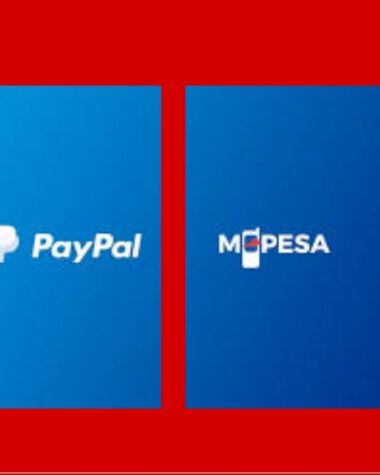As an owner or manager of a website or business, you may require writing a disclaimer in order to limit liability and inform audiences about risks or terms when accessing content or products provided by you or your brand. A release is an official legal statement which protects from claims against your content or products as well as provide transparency with your audience. We cover everything necessary in this beginner-level guide on writing disclaimers for websites or businesses.
What Are Disclaimers, and Why Do They Matter??
Disclaimers are legal statements designed to limit liability and inform users about risks or terms when accessing content or products provided by you or on your site, thus protecting themselves against legal claims and lawsuits while simultaneously increasing transparency with their audience. A disclaimer could cover various subjects like these.
Liability limits: To limit liability in case any damages or losses arise from using your content or products. Accuracy: To inform readers that any information provided on your website or in products should only be seen as informational purposes and may not always be correct and up-to-date.
Endorsements: For disclosing any relationships or affiliations you may have with companies and products mentioned on your website or products.
Medical/Legal Advice: To indicate that the information presented does not constitute medical/legal advice and should not be relied upon.
An effective disclaimer is key for safeguarding against legal claims and lawsuits as well as to building trust among your audience members and meeting legal obligations. It plays a critical role in both building rapport with them as well as meeting any requirements set by law.
What Are the Components of a Legal Disclaimer Agreement?
Legal disclaimers require specific elements in order to be effective and legally compliant, though their exact composition depends on your business or website and type. Here are some commonly included aspects of a legal disclaimer
Your disclaimer must use clear and unambiguous language so your audience can readily comprehend.
Specific Disclaimer Content: Your disclaimer should clearly state what it disclaims as well as any limitations, liabilities or accuracy issues covered within it.
Position and Visibility: Your disclaimer should be easily seen by visitors to your website or product and should also be easily accessible via a link in your footer or separate page.
Legal Compliance: Your disclaimer should comply with any relevant legal requirements, such as consumer protection statutes or industry regulations.
Updating and revising: To keep it accurate and in accord with any changing business or legal needs, your disclaimer should be reviewed periodically for updates. This ensures it remains up-to-date and relevant.
How to Write a Disclaimer Statement Step-by-Step Guidelines
Now that you understand the essential components of a disclaimer and its importance, here are some steps on writing one for your website or business:
Determine Your Disclaimers’ Purpose: It is essential that you establish why and which risks or terms need to be covered within a disclaimer in your particular circumstance.
Research Legal Requirements: Before creating your disclaimer, conduct research into any relevant laws or regulations which apply to your website or business to make sure it complies with legal regulations.
Write an understandable disclaimer: Craft your disclaimer using plain English so your audience can easily comprehend. Avoid technical terms and legalese when possible for maximum comprehension.
Include Specific Disclaimer Contents: Clearly state what it is you are disclaiming along with any limitations to liability, accuracy or other aspects covered by your disclaimer. It should also avoid vague and unclear language that might confuse readers.
Place Your Disclaimer Prominently: Ideally, place the disclaimer in an easily visible spot on your website or products so it is easily visible by visitors and easily accessible through links in your footer or separate page.
Review and Update Regularly: It is wise to periodically review and revise your disclaimer statement in order to remain compliant with legal or business changes, while remaining accurate. For guidance in creating an effective and clear disclaimer statement please see “Tips for Establishing and Updating an Accurate and Clear Disclaimer Statement”.
Here are a few additional tips for crafting an effective and transparent disclaimer
Implement plain language: When communicating, use plain and straightforward language that your target audience can easily comprehend, such as technical jargon or legal terms that might otherwise be difficult for them.
Be Clear: Be specific and clear in what it is that you are disclaiming, along with any limitations of liability or accuracy concerns covered in your disclaimer.
Keep it Short and Simple: For optimal reading and understanding purposes, keep your disclaimer fast-readable and concise so it is easily read by both visitors and clients.
Consult With Legal Professional: For clarification of legal requirements or language for your disclaimer, it may be beneficial to seek assistance from legal counsel to ensure it complies with legal standards.
Examples and Templates of Website Disclaimers and Agreements (PDPA).
Here are a few website disclaimers and templates you can use as starting points when writing yours:
Liability disclaimer
This disclaimer restricts your liability in case any harm comes from using or accessing content or products offered through your business, for instance by providing links. Here’s an example:
By accessing and/or using this website or any information provided herein, you acknowledge and accept that we shall not be held liable for any direct, indirect, incidental, consequential, or punitive damages as a result of your access or usage thereof.
Disclaimer of accuracy for information provided above.
This disclaimer clarifies that any information presented on your website or products should only be used as reference and should not be relied upon as accurate. Here’s an example:
“Please note that any information found here on this website should only be used as generalized guidance and may not be 100% accurate or up-to-date. We make no express or implied representations or warranties as to its completeness, accuracy, reliability or suitability for any specific use, such as any products services graphics available via this site – any reliance you place upon these is done so entirely at your own risk.”
Endorsement Disclaimer
An endorsement disclaimer discloses any relationships or affiliations you may have with any companies or products mentioned on your website or products, for instance by offering as an example:
“This website may receive compensation or other benefits from companies and products mentioned. Any opinions, reviews or endorsements expressed on this site are solely ours and do not influence or depend on any possible compensation received.”
Common Mistakes to Avoid in Writing an Disclaimer Agreement
Below are a few common errors to watch out for when writing disclaimers:
Use vague or ambiguous language
Your disclaimer must be clear regarding what it covers as far as limitations on liability, accuracy or other information covered within it.
Noncompliance with legal requirements: Your disclaimer should adhere to any relevant legal regulations such as consumer protection statutes or industry codes and standards.
Placement of disclaimers at inconspicuous spots
Your release should be easily visible to your target audience by placing it prominently on your website or product packaging, making sure they can reach all corners.
Misusing Disclaimers: Your disclaimers should be reviewed and revised on an ongoing basis to remain up-to-date with changes to business operations or legal requirements, so make sure they’re updated as often as needed.
Final Words on How to Write a Disclaimer
Writing a disclaimer might seem intimidating, but it’s essential for protecting your business and complying with legal requirements. A properly written release can limit liability while informing audience members about risks or terms of using your content or products. By following the beginner-friendly tips outlined here you’ll create an accurate disclaimer which provides clarity for audience and is effective protection for both you and the company. Remember to review it often to keep up-to-date.
Read Next:The Best Things to Scrap for Money: A Complete Guide to Scrap Metal Recycling








